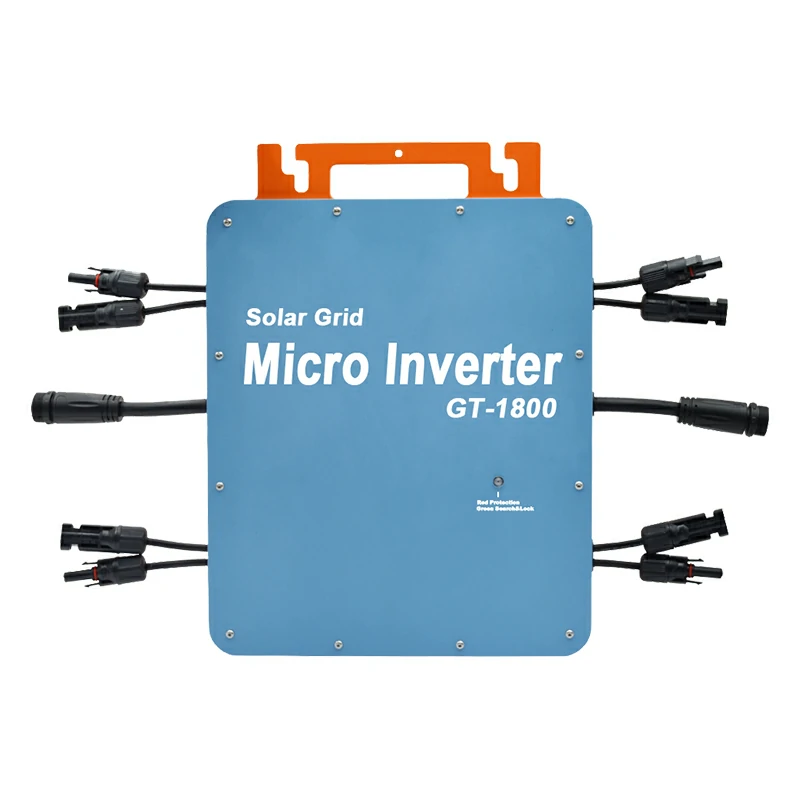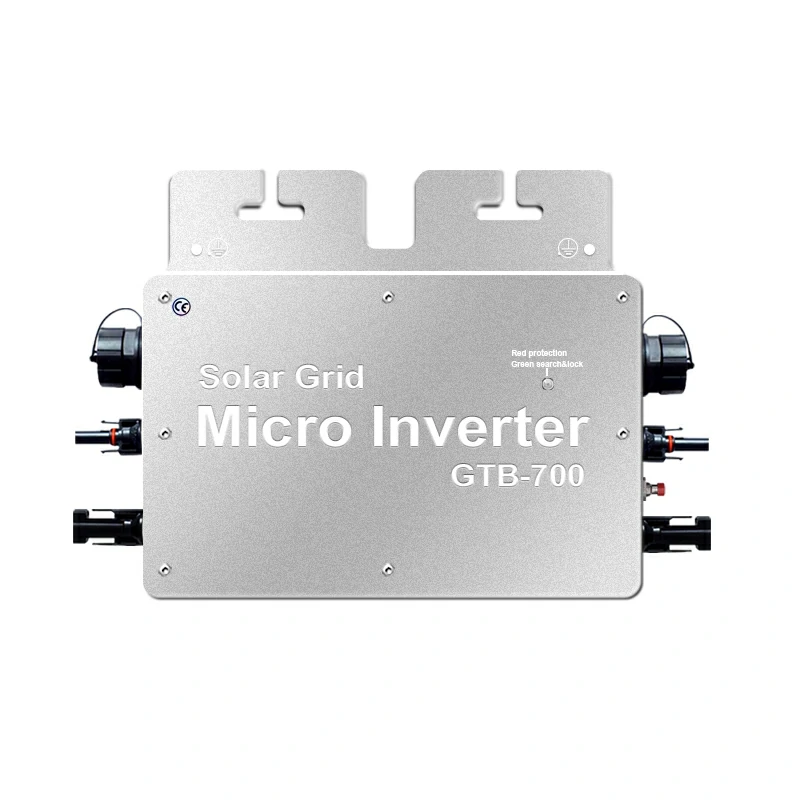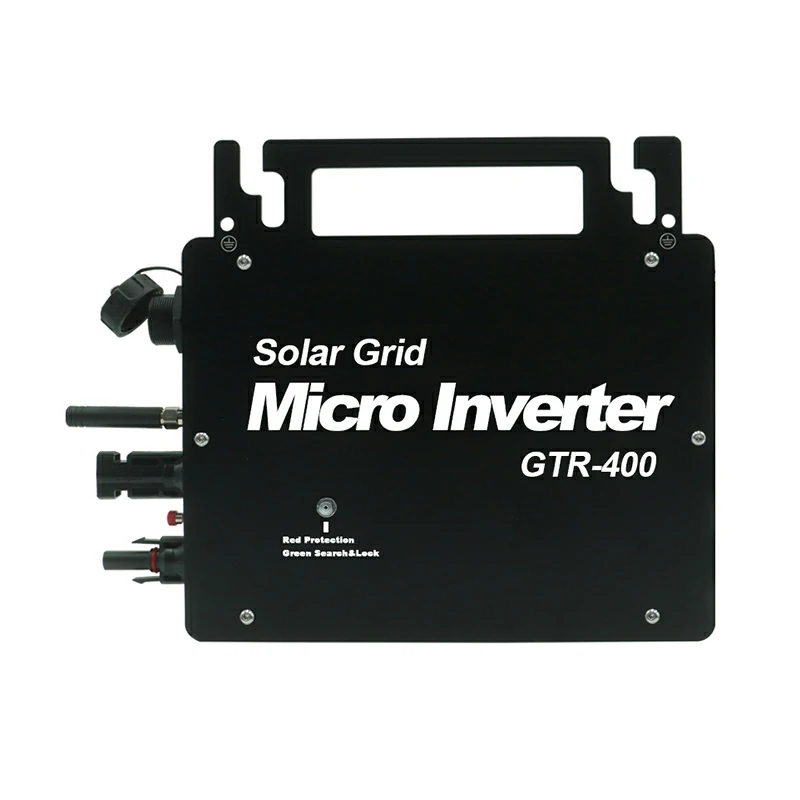Introduction
As the demand for renewable energy sources continues to rise, solar power has become an increasingly popular choice for residential and commercial energy needs. A crucial component of any solar power system is the grid-connected inverter. These devices play a vital role in converting the direct current (DC) generated by solar panels into alternating current (AC) that can be fed into the electrical grid.
Understanding the different types of grid-connected inverters is essential for investing in a solar power system. This article aims to provide a comprehensive overview of the various types of inverters available and help potential buyers make informed decisions.

What is a Grid-Connected Inverter?
A grid-connected inverter is an electronic device that converts DC electricity from solar panels into AC electricity compatible with the electrical grid. This conversion is essential because most household appliances and the grid operate on AC power. Grid-connected inverters ensure that the electricity generated by solar panels can be efficiently used by household appliances or fed back into the grid, potentially earning credits or reducing electricity bills through net metering.
In addition to converting DC to AC, grid-connected inverters synchronize the electricity they produce with the grid’s voltage and frequency. This synchronization is crucial for maintaining a stable and reliable power supply. Grid-connected inverters are also responsible for maximizing energy production by tracking the solar panels’ maximum power point (MPP), ensuring they operate at their most efficient level.
Types of Grid-Connected Inverters
Several grid-connected inverters are available on the market, each with unique features and benefits. Understanding these different types can help you choose the suitable inverter for your needs.
String Inverters
String inverters are the most commonly used type of grid-connected inverter, especially in residential and small commercial solar installations. They connect a series of solar panels (a string) to a single inverter. The inverter then converts the string’s combined DC output into AC power.
Advantages:
- Cost-effective: String inverters are generally less expensive than other inverters, making them a popular choice for budget-conscious installations.
- Simplicity: Their straightforward design makes them easy to install and maintain.
Disadvantages:
- Shading Issues: If one panel in the string is shaded or underperforming, it can affect the entire string’s output, reducing overall system efficiency.
- Uniform Orientation Required: To function optimally, panels connected to a string inverter must have a similar orientation and tilt.
Ideal Use Cases:
- String inverters are suitable for installations where minimal shading is required, and all panels can be installed with the same orientation and tilt.
Microinverters
Microinverters are small inverters installed on each solar panel. They convert the DC output of each panel into AC power individually. This decentralized approach offers several advantages over string inverters.
Advantages:
- Optimal Performance with Shading: Since each panel operates independently, shading on one panel does not affect the performance of the others.
- Per-Panel Energy Maximization: Microinverters allow maximum power point tracking (MPPT) at the panel level, ensuring each panel operates at its peak efficiency.
- Easier System Expansion: Adding more panels to a microinverter system is straightforward and does not require significant reconfiguration.
Disadvantages:
- Higher Upfront Cost: Microinverters are more expensive per watt than string inverters.
- Complex Installation: The installation process can be more labor-intensive and time-consuming since each panel requires its inverter.
Ideal Use Cases:
- Microinverters are suitable for installations with complex roof structures, shading issues, or where maximum energy production is a priority.
Power Optimizers with String Inverters
Power optimizers are devices installed on each solar panel to maximize energy production before sending the DC electricity to a central string inverter. They combine the benefits of both string inverters and microinverters.
Advantages:
- Mitigates Shading Effects: Power optimizers allow each panel to operate at its optimal power point, reducing the impact of shading on system performance.
- Improves System Performance: Power optimizers enhance overall system efficiency by optimizing each panel’s output.
- Easier Monitoring: Many power optimizer systems come with advanced monitoring capabilities, allowing users to track the performance of individual panels.
Disadvantages:
- Higher Cost: Combining power optimizers with a string inverter can be more expensive than using a string inverter alone.
- Still Requires Central Inverter: A central string inverter is still necessary, which means the system has more components that can potentially fail.
Ideal Use Cases:
- Power optimizers are suitable for installations with partial shading, complex roof designs, or where enhanced monitoring and performance are desired.
Central Inverters
Central inverters are large, powerful inverters typically used in utility-scale solar installations. They function similarly to string inverters but can handle much higher power levels.
Advantages:
- Cost-effective for Large-Scale Installations: Central inverters offer economies of scale, making them cost-effective for large solar farms and commercial projects.
- High Efficiency: These inverters are designed for high efficiency and reliability, which are essential for large-scale operations.
Disadvantages:
- Not Suitable for Residential Use: Central inverters are impractical for residential installations due to their size and power capacity.
- Complex Maintenance: Central inverters require regular maintenance and skilled technicians to ensure optimal performance.
Ideal Use Cases:
- Central inverters are ideal for large-scale solar farms, commercial installations, and utility projects where high power capacity and efficiency are paramount.
Selecting a suitable grid-connected inverter involves evaluating several factors to ensure it meets your specific needs and maximizes the performance of your solar power system. Here are some key considerations to keep in mind:
System Size and Configuration
The size of your solar installation significantly impacts your choice of inverter. Smaller residential systems benefit from the simplicity and cost-effectiveness of string inverters, while larger systems require the enhanced performance of microinverters or power optimizers. Ensure the inverter you choose is compatible with your solar panel array and grid requirements.
Efficiency and Performance
Inverter efficiency is crucial as it affects the overall energy yield of your solar power system. Efficiency ratings, usually expressed as a percentage, indicate how much DC power is converted into usable AC power. Higher-efficiency inverters result in less energy loss during the conversion. When comparing grid-connected inverters, look for those with high-efficiency ratings to maximize your system’s performance.
Cost and Budget
While initial cost is an important consideration, weighing it against long-term savings and benefits is essential. For instance, microinverters might have a higher upfront cost but can perform better in shaded conditions, leading to higher overall energy production and savings over time. Additionally, research available financial incentives, rebates, and tax credits that might offset the cost of more expensive options.
Installation and Maintenance
The complexity of installation varies with different types of inverters. String inverters are relatively simple to install, while microinverters and power optimizers require more labor and expertise. Consider the availability of qualified installers in your area. Additionally, think about the maintenance requirements. Microinverters and power optimizers need more frequent checks compared to string inverters.
Warranty and Reliability
A robust warranty indicatesindicates an inverter’s reliability and the manufacturer’s confidence in its product. Grid-connected inverters typically come with warranties ranging from 5 to 25 years. Look for manufacturers that offer more extended warranties and have a reputation for producing reliable inverters. This can save you from potential issues and additional costs in the future.
Monitoring and Smart Features
Modern grid-connected inverters often come with advanced monitoring capabilities, allowing you to track your solar system’s performance in real-time. Some inverters can integrate with smart home systems and offer remote monitoring and control via smartphone apps. These features can provide valuable insights into your system’s performance and help you optimize energy usage.
Future Trends in Grid-Connected Inverters
The solar power industry is continually evolving, and so are grid-connected inverters. Here are some emerging trends and technological advancements to watch for:
Smart Grid Integration
As intelligent grids become more prevalent, grid-connected inverters increasingly incorporate features that allow better communication and interaction with the grid. This can enhance grid stability and improve energy management.
Energy Storage Integration
The integration of energy storage systems with grid-connected inverters is gaining traction. Hybrid inverters that can manage solar generation and energy storage are becoming more popular, allowing users to store excess energy during peak demand times or grid outages.
Enhanced Monitoring and AI
Advancements in monitoring technology and artificial intelligence are leading to more innovative inverters that can predict performance issues and optimize energy production more effectively. These features can significantly enhance the efficiency and reliability of solar power systems.
Improved Efficiency and Reduced Costs
Ongoing research and development lead to more efficient inverters that can convert more DC power into AC power with minimal losses. Additionally, as technology advances, the cost of high-performance inverters is expected to decrease, making them more accessible to a broader range of consumers.
Conclusion
Choosing the correct type of grid-connected inverter is a critical decision that can impact the efficiency and performance of your solar power system. Whether you opt for string inverters, microinverters, power optimizers, or central inverters, it’s important to consider system size, efficiency, cost, installation complexity, and warranty factors.
Grid-connected inverter manufacturers continue to innovate, offering new features and improved performance. By staying informed about the latest trends and advancements, you can make a well-informed decision that meets your energy needs and budget. Remember to seek professional consultation to ensure your system is optimally designed and installed for maximum benefit.
Investing in a suitable grid-connected inverter will help you harness the full potential of your solar power system, contributing to a more sustainable and cost-effective energy future.




